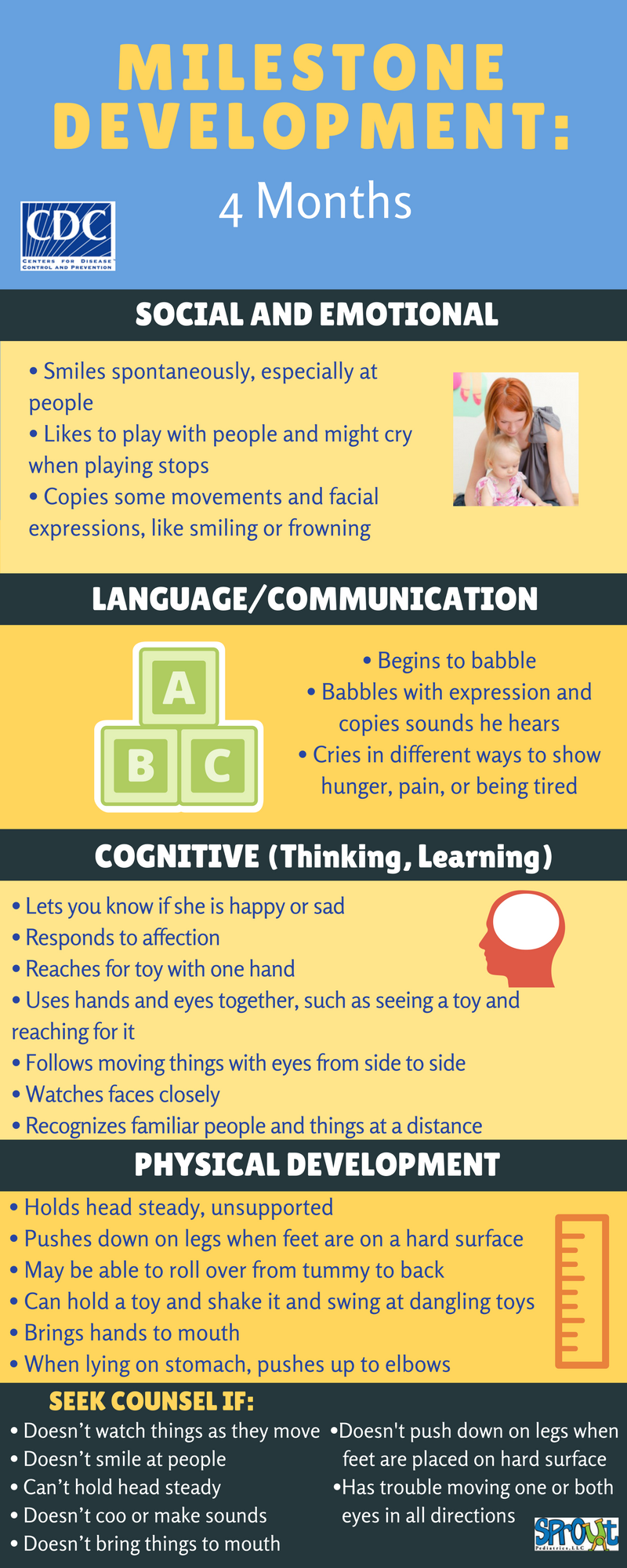4 Months – What most babies do at this age:
Social and Emotional
• Smiles spontaneously, especially at people
• Likes to play with people and might cry when playing stops
• Copies some movements and facial expressions, like smiling or frowning
Language/Communication
• Begins to babble
• Babbles with expression and copies sounds he hears
• Cries in different ways to show hunger, pain, or being tired
Cognitive (learning, thinking, problem-solving)
• Lets you know if she is happy or sad
• Responds to affection
• Reaches for toy with one hand
• Uses hands and eyes together, such as seeing a toy and reaching for it
• Follows moving things with eyes from side to side
• Watches faces closely
• Recognizes familiar people and things at a distance
Movement/Physical Development
• Holds head steady, unsupported
• Pushes down on legs when feet are on a hard surface
• May be able to roll over from tummy to back
• Can hold a toy and shake it and swing at dangling toys
• Brings hands to mouth
• When lying on stomach, pushes up to elbows
We recommend you seek counsel from your babies doctor if your child:
• Doesn’t watch things as they move
• Doesn’t smile at people
• Can’t hold head steady
• Doesn’t coo or make sounds
• Doesn’t bring things to mouth
• Doesn’t push down with legs when feet are placed on a hard surface
• Has trouble moving one or both eyes in all directions
You may not know this, but the American Academy of Pediatrics recommends children be screened for general development using standardized measures at 9,18,24 and 30 months and for autism at 18 and 24 months or whenever a parent or child care provider has a concern. We find that unless parents are proactive in asking for a screening or describe actions or lack thereof that give them concern, most pediatricians are unaware of your child’s developmental delays. Many take a “wait and see approach” but you should request a screening if you as the parent have an unsettled feeling about your child’s growth and development.
This information was taken from the CDC’s website and meant to give you guidelines for development. For more information or if you are concerned, log onto the CDC’s “If You’re Concerned” website.


